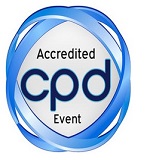
Nasim Mohamad Alsebai and Abdulrahim Abu Jayyab
Emirates College of Technology, UAE
Title: Management of perforated appendicitis in children and infection prevention
Biography
Biography: Nasim Mohamad Alsebai and Abdulrahim Abu Jayyab
Abstract
Perforated appendicitis in children continues to be associated with significant morbidity. In 2012, a treatment algorithm was begun at the authors' institution, which included immediate appendectomy, antibiotic irrigation of the peritoneal cavity, trans-peritoneal drainage through the wound and 10-day treatment with intravenous ampicillin, clindamycin and gentamicin. Initial results with this scheme in 27 patients demonstrated a 7.7% incidence of major complications and no deaths. From 2012 through 2016, the authors continued to use this treatment plan in all patients with perforated appendicitis. 73 patients with perforated appendicitis were treated and the rate of major complications was 6.4%. Infectious complications occurred in 18 patients (4.8%) and included intra-abdominal abscesses (2 patients, 1.3%), phlegmon treated with an extended course of antibiotics (2 patients, 1.6%), wound infections (5 patients, 1.3%) and entero-cutaneous fistula requiring further operations (2 patients, 0.5%). There were six cases of small bowel obstruction (1.6%), which required operative intervention. There were no deaths. The average length of stay of all patients was 11.4 days (range, 8 to 66 days). Utilization of trans-peritoneal drainage and choice of antibiotic therapy continue to be sources of controversy in the surgical literature. However, the treatment plan used in the present study resulted in the lowest complication rate reported to date and the authors conclude that this scheme in truly the “gold standard” for treatment of perforated appendicitis. New treatment plans using laparoscopic appendectomy, different or shorter courses of antibiotics or not using drain should have complication rates that are as low as or lower than this one to be considered as useful alternatives.

